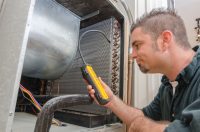Carbon Capture Bills Gathering Steam in Congress
Several bills creating benefits and financing for carbon capture have been introduced in Congress and are seeing movement through bipartisan support. Carbon capture, also known as carbon capture, utilization, and sequestration (CCUS), is the process of gathering carbon dioxide (CO2) emissions, typically from sources such as coal-fired power plants. Once captured, the greenhouse gas is […]










